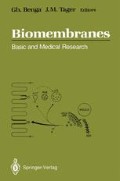Abstract
The need for an effective and safe adjuvant for use in human immunization programs is well recognized (WHO 1976). Many of the antigens are costly or only available in small quantities (e.g. recombinant DNA products) and others, synthetic small peptides for instance, can be weakly or non-immunogenic. Adjuvants presently available, e.g. complete and incomplete Freund’s adjuvants, bacterial endotoxins, polyanions, mineral adsorbents, etc., induce local or systemic toxicity, form unacceptable granulomas, lack efficiency or have short-term effects. Another possible hazard with some of these adjuvants is the production of allergic reactions to the incorporated vaccines in a minority of recipients, especially those already sensitized to the antigen. If adjuvants contain even traces of immunogenic materials such as proteins or glycolipids, the latter may themselves induce allergic or autoallergic reactions. On the other hand, live virus vaccines can initiate persistent infections or malignancy (WHO 1976). Even the vaccinia strategy which employs the original smallpox virus vaccine in a genetically engineered form entails considerable risk (Gregoriadis 1985).
Access this chapter
Tax calculation will be finalised at checkout
Purchases are for personal use only
Preview
Unable to display preview. Download preview PDF.
References
Allison AC, Gregoriadis G (1974) Liposomes as immunological adjuvants. Nature (London) 252:252.
Alving CR, Banerji B, Shiba T, Kotani S, Clements JD, Richards RL (1980) Liposomes as vehicles for vaccines. In: New developments with human and veterinary vaccines. Liss, New York.
Davis D, Davies A, Gregoriadis G (1986) Liposomes as immunological adjuvants in vaccines: studies with entrapped and surface-linked antigen. Biochem Soc Trans 14:1036–1037.
Davis D, Gregoriadis G (1987) Liposomes as adjuvants with immunopurified toxoid: influence of liposomal characteristics. Immunology 61:229–234.
Davis D, Davies A, Gregoriadis G (1987) Liposomes as adjuvants with immunopurified tetanus toxoid: the immune response. Immunol Lett 14:341–348.
Francis MJ, Fry CM, Rowlands DJ, Brown F, Bittie JL, Houghten RA, Lerner RA (1985) Immunological priming with synthetic peptides of foot-and-mouth disease virus. J Gen Virol 66:2347–2354.
Gregoriadis G (1983) Targeting of drugs with molecules, cells and liposomes. Trends Pharm Sei 4:304–307.
Gregoriadis G (ed) (1984) Liposome technology, vols 1–3. CRC Press, Boca Raton.
Gregoriadis G (1985) Liposomes as carriers of drugs and vaccines. Trends Biotechnol 3:235–241.
Gregoriadis G (1986) Liposomal subunit vaccine against Epstein-Barr virus-induced malignant lymphoma. Nature (London) 320:87–88.
Gregoriadis G, Allison AC (1974) Entrapment of proteins in liposomes prevents allergic reactions in pre-immunized mice. FEBS Lett 45:71–74.
Gregoriadis G, Weereratne H, Blair H, Bull GM (1982) Liposomes in Gaucher Type 1 disease: use in enzyme therapy and the creation of an animal model. In: Desnick RJ, Gatt S, Grabowski GA (eds) Gaucher disease: a century of delineation and research. Liss, New York, 681–701.
Gregoriadis G, Davis D, Davies A (1987) Liposomes as immunological adjuvants: antigen incorporation studies. Vaccine 5:145–151.
Hedlund G, Jansson B, Sjogren HO (1984) Comparison of immune responses induced by rat RT-1 antigens presented as inserts into liposomes, as protein micelles and as intact cells. Immunology 53:69–78.
Kinsky SC (1978) Immunogenicity of liposomal model membranes. Ann NY Acad Sei 308:111–123.
Kirby C, Gregoriadis G (1984) Dehydration-rehydration vesicles (DRV): a new method for high-yield drug entrapment in liposomes. Biotechnology 2:979–984.
Manesis EK, Cameron C, Gregoriadis G (1979) Hepatitis B surface antigen-containing liposomes enhance humoral and cell-mediated immunity to the antigen. FEBS Lett 102:107–111.
Naylor PT, Larsen HS, Huang L, Rouse BT (1982) In vivo induction of anti-herpes simplex virus immune response by type 1 antigens and lipid A incorporated into liposomes. Infect Immun 36:1209–1216.
Rooijen N van, Nieuwmegen R van (1978) Liposomes in immunology: evidence that their adjuvant effect results from surface exposition of the antigens. Cell Immunol 49:402–407.
Sanchez Y, Ionescu I, Dreesman GR, Kramp W, Six HR, Hollinger FB, Melwick JL (1980) Humoral and cellular immunity to hepatitis B virus-derived antigens: comparative activity of Freund’s complete adjuvant, alum and liposomes. Infect Immun 30:728–733.
Shek PN, Sabiston BH (1982) Immune response mediated by liposome-associated protein antigens, II. Comparison of the effectiveness of vesicle-entrapped and surface-associated antigen in immunopotentiation. Immunology 47:627–632.
Shek PN, Yung BYK, Stanacev NZ (1983) Physicochemical and immunological properties of albumin associated dialkyl-ether phosphatidylcholine liposomes. Immunology 49:37–44.
Snyder SL, Vannier WE (1984) Immunological response to protein immobilised on the surface of liposomes via covalent azo-bonding. Biochim Biophys Acta 772:288–294.
WHO (1976) Immunological adjuvants. Rep WHO Sei Group Techn Rep Ser 595.
Author information
Authors and Affiliations
Editor information
Editors and Affiliations
Rights and permissions
Copyright information
© 1988 Springer-Verlag Berlin Heidelberg
About this chapter
Cite this chapter
Gregoriadis, G. (1988). Liposomes as Immunological Adjuvants: The Immune Response and the Effect of Liposomal Structural Characteristics. In: Benga, G., Tager, J.M. (eds) Biomembranes. Springer, Berlin, Heidelberg. https://doi.org/10.1007/978-3-642-61374-6_3
Download citation
DOI: https://doi.org/10.1007/978-3-642-61374-6_3
Publisher Name: Springer, Berlin, Heidelberg
Print ISBN: 978-3-642-64815-1
Online ISBN: 978-3-642-61374-6
eBook Packages: Springer Book Archive

